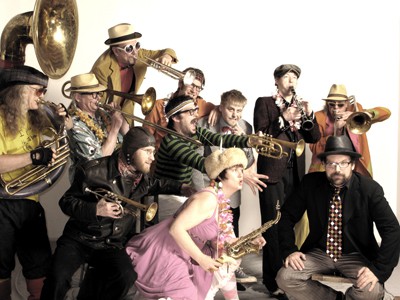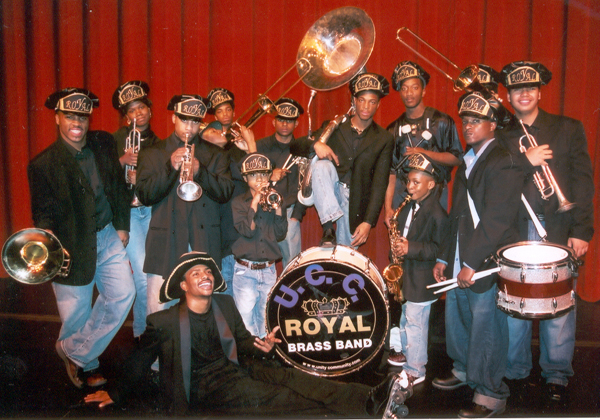Just like the 50+ recordings American Brass Quintet has produced or been featured on, their live concert was just as good, if not better. The trumpets are able to blend in such a way that one often loses track of who's play which part. The entire group's sound is very well balanced and on the brilliant side - I assume this could be due to the bass trombone which is able to match the more brilliant qualities of the higher instruments than a tuba.
They opened the show with three canzoni by different composers. The canzona by Anthony Troilo featured the trumpets players using flugelhorns on rapid, "note-y" passages - this seemed unusual since flugelhorns are typically employed for slow, ballad-like music. This instrumentation worked well for the group since everyone had a relatively dark, mellow sound. The recital continued with a piece by Osvaldo Lacerda (b. 1927),
Fantasia e Rondo. The final piece of the first half was by Shafer Mahoney, who was a winner of the ABQ commission contest ($6000 each to 4 composers). The parameters of this commission was very peculiar. The composer had to be from either one of the five boroughs of New York City, or else Minnesota. Mahoney was one of the recipients and won writing the three movement,
Brass Quintet.
The second half opened with a very popular composer for the ABQ, David Sampson.
Entrance, was originally entitled
Exit until ABQ contacted Sampson and told him they were using it as an opener instead of a final piece. Powell joked with the audience that when one searches through Sampson's brass quintet compositions, they'll see two published works among the many: one titled
Entrance, and one
Exit. ABQ continued with the Maurer
Five Pieces. Most brass musicians know of this pieces as having only three movements, but Maurer actually composed twelve. Thier concert ended with a Joan Tower piece called
Copperwave. Tower, a prolific composer for brass instruments, was commissioned to write this piece for the ABQ.
The American Brass Quintet then held a masterclass the following morning after a quick hang atthe bar with UW-Madison brass musicians. They talked about each quintet member's role in quintet duties. They each had duties from arranging, to website upkeep, to travel and accommodation planning. They talked about how every group needs a leader and how Ray fits that position well. I noticed when Ray was speaking both about the quintet and about specific pieces, his public speaking was very conversational and made it appear that he thoroughly knew the material he was discussing. The quintet finished by coaching a student brass quintet.














